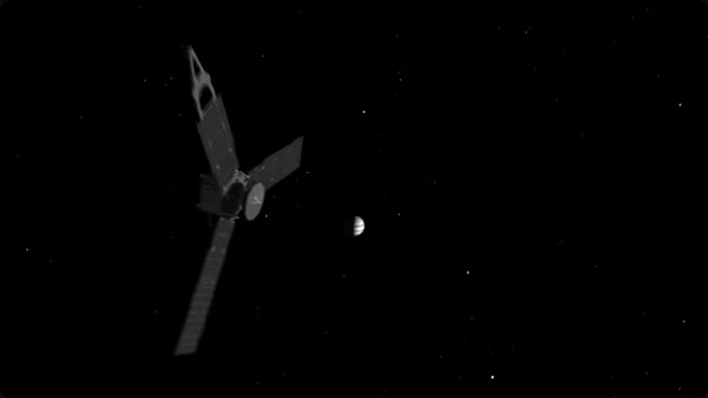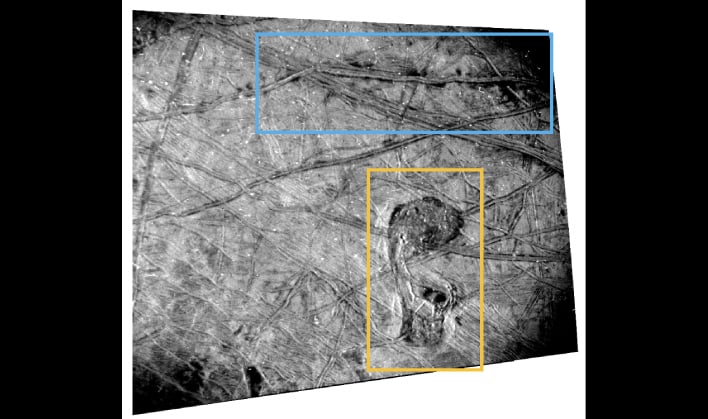NASA Juno Spacecraft Captures Stunning Views Of Jupiter’s Icy Moon Europa
On September 29, 2022, Juno made its closest flyby yet of Jupiter’s moon Europa, coming within 220 miles (355 kilometers) of the moon’s frozen surface according to NASA. The spacecraft sent back five high-resolution images of the icy moon and its surface. Those images seem to back previous theories surrounding Europa’s icy crust, as well as possible signs of plume activity.
The images sent back from the spacecraft’s JunoCam visible-light camera lend support to the theory that the icy crust located at the north and south poles of Europa is not where it once was. Images from another of Juno’s cameras, its Stellar Reference Unit (SRU), also unveiled signs of potential plume activity, as well as an area of ice shell disruption where brine could have recently bubbled to the surface.

Also included in the high-resolution images are images of large ovoid pits, which were previously detected from other locations of Europa. NASA remarked that a giant ocean is believed to exist below the moon’s icy exterior, with surface features like the ovoid pits being associated with “true polar wander.” This theory details how Europa’s outer shell ice might be free-floating and moving.
“True polar wander occurs if Europa’s icy shell is decoupled from its rocky interior, resulting in high stress levels on the shell which lead to predictable fracture patterns,” remarked Candy Hansen, a Juno co-investigator who leads planning for JunoCam at the Planetary Science Institute in Tucson, Arizona. “This is the first time that these fracture patterns have been mapped in the southern hemisphere, suggesting that true polar wander’s effect on Europa’s surface geology is more extensive than previously identified.”

This unorthodox method of using Juno’s SRU camera allowed complex surface features to stand out, while revealing intricate networks of cross-cutting ridges and dark stains from potential plumes of water vapor. One of the more enticing features captured using this method was of “the Platypus,” named so because of its shape (see image above).
Juno completed its 61st close flyby of Jupiter on May 12, 2024. Its 62nd flyby of Jupiter is scheduled for June 13, 2024, which will include a flyby of one of Jupiter’s other moons, Io, at an altitude of about 18,200 miles (29,300 kilometers).


